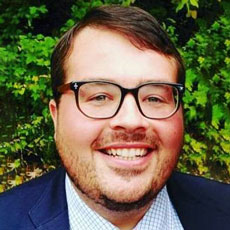CNS Area Welcomes New Faculty
 |
Brennan Payne, Ph.D.Assistant Professor |
Current Position:
I am currently an Assistant Professor in the Cognition and Neural Science Program in the Department of Psychology at the University of Utah. I was hired as part of the recent Transformative Excellence Program cluster-hire in the “Neural Basis of Behavior, Learning, and Memory”, with the goal of promoting interdisciplinary research efforts across campus. Prior to arriving at the U, I completed my postdoctoral training in Cognitive Neuroscience while in the Department of Psychology and the Beckman Institute for Advanced Science and Technology at the University of Illinois. I received my PhD in 2014 and my MS in 2012 in the Cognitive Science of Teaching and Learning, an interdisciplinary program in the department of Educational Psychology at the University of Illinois. In 2009, I received my BA in Psychology and Cognitive Science at the State University of New York at Oswego.
Past Achievements:
-2017. Early Career Award. Society for Experimental Psychology and Cognitive Science (Division 3, APA)
-2015. Thomas and Margaret Huang Award for Research in Human Computer Intelligent Interaction.
-2013. Beckman Institute Graduate Research Fellow.
-2013. Paul D Doolen Fellow for Research in the Study of Aging.
-2012. National Institutes of Health (T32) Training Fellow in the Cognitive Neuroscience of Language.
Current Research:
My current research program is a marriage of both basic and applied perspectives, guided towards understanding the nature of individual differences in language, attention, and memory systems across the adult lifespan. The aging process brings about multidimensional and multidirectional changes in cognitive and brain functioning. My research uses normative and non-normative adult development as models to understand the basic processes that subserve language, attention, and memory functioning and to develop theory-driven approaches to support adult brain and cognitive health. I adopt an interdisciplinary and multi-method approach to this work, merging theoretical models from the cognitive and neural sciences, gerontology, linguistics, and quantitative and experimental psychology as well as a range of methods including the measurement of brain activity (e.g., event-related brain potentials), eye-movement control, and performance.
What do you like most about your work:
Ever since I was a kid, I have loved the process of discovery. The idea that if you have a question that no one has the answer to, you can go out there and figure it out for yourself. And where do we have more questions than how the human mind and brain work? More than the process of discovery though, I have been driven by use-inspired basic research in Psychology. That is, making discoveries about the mind and brain that can be used to improve the lives of people. In my primary research, language and memory aging, there is a rush to develop methods for maintaining and improving upon communicative competence and memory functioning throughout the lifespan. At the same time, we still have much progress to make in the very basic understanding of how language and memory systems work in order to develop methods to compensate for or directly improve performance in these domains.
Selected Publications:
Payne, B.R. & Federmeier, K.D. (2017). Pace yourself: Intraindividual variability in context use during reading revealed by self-paced event-related brain potentials. Journal of Cognitive Neuroscience, 29, 837-854.
Payne, B.R. & Stine-Morrow, E.A.L. (2017). The effects of home-based cognitive training on verbal working memory and language comprehension in older adulthood.Frontiers in Aging Neuroscience, 9, 1-20.
Payne, B.R., Stites, M.C., & Federmeier, K.D. (2016). Out of the corner of my eye: Foveal semantic load modulates parafoveal processing in reading. Journal of Experimental Psychology: Human Perception and Performance, 26, 1839-1857.
Payne, B.R. & Stine-Morrow, E.A.L. (2016). Risk for mild cognitive impairment is associated with semantic integration deficits in sentence processing and memory. The Journal of Gerontology: Psychological Sciences, 71, 243-253.
Payne, B.R., Lee, C-L., & Federmeier, K.D. (2015). Revisiting the incremental effects of context on word processing: Evidence from single-word event-related brain potentials. Psychophysiology, 52, 1456-1469.
Payne, B.R., Grison, S., Gao, X., Christianson, K., Morrow, D.G., & Stine-Morrow, E.A.L. (2014). Aging and individual differences in binding during sentence understanding: Evidence from temporary and global syntactic attachment ambiguities. Cognition, 130, 157-173.
Payne, B.R., Gross, A.L, Parisi, J.M., Sisco, S., Stine-Morrow, E.A.L., Marsiske, M., & Rebok, G.W. (2014). Modeling longitudinal changes in older adults’ memory for spoken discourse: Findings from the ACTIVE cohort. Memory, 22, 990-1001.
Payne, B.R. & Stine-Morrow, E.A.L (2012). Aging, parafoveal preview, and semantic integration in sentence processing: Testing the cognitive workload of wrap-up. Psychology and Aging, 27, 638-649.
Payne, B.R., Gao, X., Noh, S.R., Anderson, C.J., & Stine-Morrow, E.A.L. (2012). The effects of print exposure on sentence processing and memory among older adults: Evidence for efficiency and reserve. Aging, Neuropsychology, and Cognition, 19, 122-149.
